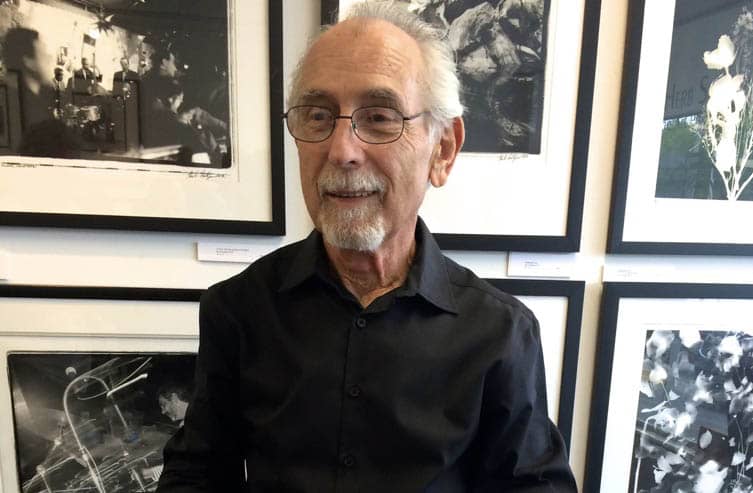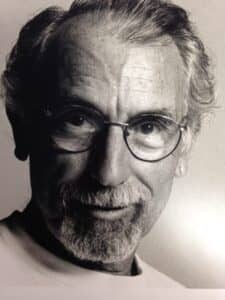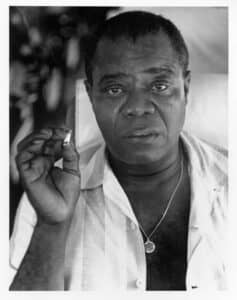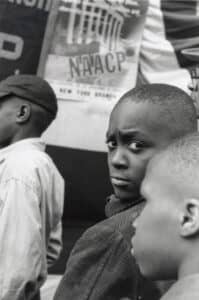Create
Remembering Herb Snitzer, photographic pioneer

 Family and friends remembered Herb Snitzer as a caring, compassionate man with a strong sense of conviction, an equally strong sense of humor and blessed with a photographer’s keen eye.
Family and friends remembered Herb Snitzer as a caring, compassionate man with a strong sense of conviction, an equally strong sense of humor and blessed with a photographer’s keen eye.
The 90-year-old St. Petersburg resident, known around the world for his iconic black-and-white photographs of jazz musicians, New York street life and the myriad faces of social injustice, died Dec. 31 of complications from Parkinson’s Disease.
The son of Ukrainian immigrants, Snitzer grew up in Philadelphia. He developed an interest in photography while serving in the US Army, and moved to New York City to try it as a profession.
Snitzer’ first solo show, Four Seasons of Central Park, was mounted at the Museum of the City of New York in 1958. He was 27 years old.

Louis Armstrong by Herb Snitzer
Yet it was his portraits of Black jazz musicians, taken during the height of the post bebop era of the 1950s and early ‘60s, on which Snitzer made his name, for Life magazine, Look magazine, the New York Times and other prestigious publications.
Juxtaposed against street scenes of the ongoing struggle for civil rights, Snitzer created a powerful portfolio.
“He saw them as the same thing,” explained painter and printmaker Carol Dameron, Snitzer’s widow. “Because he saw jazz as a metaphor for freedom. Of course, he loved jazz, he loved the improvisational quality, and the darkness to it. And the incandescence of it. That’s a reflection of the Black culture.

Thelonius Monk, by Herb Snitzer
“He loved the richness of the Black culture. He saw real injustice there and tried to fix it. And so it was the same thing.”
In a 2020 SPX interview with Catalyst publisher Joe Hamilton, Snitzer discussed his life and career, and the events that shaped him.
“What I was doing in the early part of my career was basically establishing myself as the young documentary photographer,” he said. “Which I was able to do, and ended up photographing for Life magazine, which was a thrill all by itself, for somebody so young and so inexperienced. It was a glorious time.”

Nina Simone, by Herb Snitzer
Metronome magazine hired him to photograph musician Lester Young at the Five Spot Café in the fall of 1958. “Musicians, they’re not brain-dead, you know?” Snitzer said. “They really do understand life’s issues. Because they were always traveling – and being in the South, it was like combat pay. It was frightening.”
The South, of course, was ground zero for Jim Crow and brutally enforced segregation.
His iconic subjects included Louis Armstrong, Thelonious Monk, John Coltrane, Dizzy Gillespie, Miles Davis, Count Basie, Duke Ellington, Nina Simone (with whom Snitzer maintained a decades-long friendship) and many others. He sometimes rode the tour bus with them.
“I was trusted almost right away, because I was paying attention to the musicians,” he told Hamilton. “I was talking with them, hanging out with them, smoking a little dope with them. It was an experience that I was able to re-create when I moved to Florida and joined the St. Pete NAACP branch.”

Herb Snitzer photographed a New York NAACP rally in 1958.
That came in 1991; Snitzer and Dameron met three years later and settled into local life.
“He had a big heart, and that shone through in every image that he made,” said art and photography curator and journalist Robin O’Dell, who curated a 2018 exhibition of Snitzer’s work at the Museum of Fine Arts St. Petersburg.
“He had an uncommon ability to make people at ease – and to capture their soul, really. He used to say that one of his strengths was that he was a small man, so he could be places and he didn’t intimidate people at all. He was able to take these really incredible photographs, and they would still feel comfortable around him. But I think it was because he was such a warm, kind person that people just felt good when he was around.”
Percussionist Gumbi Ortiz had known Snitzer since 1997, when the photographer supplied him with a cover image for an album, called Imagine That.
True to form, the photographer and the musician developed an instant and unbreakable bond.

Herb and Gumbi. Photo courtesy Gumbi Ortiz.
“He was an intense and very funny guy,” the Gulfport based Ortiz recalled. “He was all ears. He would listen to everything you had to say. Like what you do with a picture – he would wait for the picture. He did that with the conversation. He let you talk. He let you feel like you were important. That’s probably how he got all those great shots, because he was patient.
“And I’m kind of always talking the sh–, and we laughed, and no matter what I said, I couldn’t offend him! That was my goal, eventually, in our friendship – how can I offend Herb Snitzer?
“I just couldn’t do it, because he’d been there, and done all that.”

Photo by Suzanne Williamson








Mike Connelly
January 13, 2023at5:36 pm
Every picture tells a story…, don’t it.
Jazz is a lot like church, many attend few understand.
Herb Snitzer certainly knew 🙋📸 💜🎶